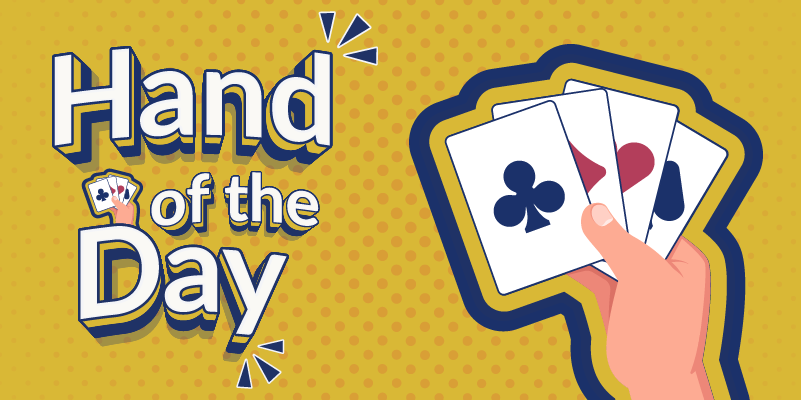



Bridge, like Baseball and Cricket, is a game packed with statistics. The advent of online play has made it possible to compile a massive amount of information.
In this series, we are analyzing 1,000,000 deals which were played online. These deals cover a wide range of level of play and were provided by Stephen Pickett with Bridge Browser.
On how many deals was 3 No-Trump the final contract?
Answer: 181,119 ‒ or 18.1% of all deals.
On how many deals was 4-of-a-major the final contract?
Answer: 248,980 ‒ or 24.9 % of all deals.
That was the singular most popular contract.
FYI:
5 Clubs was played on 2.3% of all deals and
5 Diamonds on 2.9% (so, a game contract in a minor occurred on 5.2% of 1,000,000 deals). That means that GAME was bid on just less than half of all deals played. The most common slam contracts were 6 Hearts, 6 Spades, and 6 No-Trump – each occurring approximately 14000 times out of the 1,000,000 deals (or 1.4% of the time for each). Cumulatively, small slams were bid on 5.7% of all deals. Grand slams (with 7 No-Trump the most common one) were bid on a little more than 5000 of 1,000,000 deals – or about half a percent. I suspect the number would be higher in an expert game.
SUMMARY:
Slam (small or grand) was bid on 6.2% of the 1,000,000 deals.
When the final contract was 1 No-Trump, it was set about 29% of the time and made 71% of the time (often with overtricks).
Here is how many tricks were taken (in order of frequency):
When the 1NT bid was a direct overcall (passed out in 1NT), the overcaller averaged 45% at matchpoints and went slightly minus in IMP expectancy.
In contrast, when the auction went 1NT-Pass-Pass-Pass, this was very good for opener’s side. At matchpoints it resulted in an average of 58% and at IMPs a gain of nearly 1/2 imp per board. These are remarkably high averages. It proves what I’ve always known: "If at all possible, interfere over the opponents’ 1NT opening, especially in balancing seat."
When one side opens the bidding, how likely is it that they will be the declaring side?
75% – a number that might have been guessed. The non- opening side plays 25% of the hands.
Some more trivia (or is it minutia?):
The non-opening side played in a grand slam (keep
in mind, it could have been a sacrifice) on only 471 of 1,000,000 deal (note that 10,000 would be 1%, so this is a really low percentage, as expected). Of those grand slams, 26 were a contract of 7 No-Trump for the non-openers side. Contrast that to 1350 contracts of 7 No-Trump reached by the opener’s side.
On the other end of the spectrum, the Opener’s Side played it in 1 Club (that would be 1♣-Pass-Pass-Pass, in case you are having a bad-brain day) on only 1997 of 1,000,000 deals – a fifth of a percent. In case you are really having a bad-brain day, I will tell you that the non- opener’s side played in 1 Club zero times – of course. They did play in 1 Diamond (that would be a 1♣ opening and then the other side buys it in 1♦) on only 237 out of a million – a rare occurrence indeed.
What was the most popular contract by each side?
For opener’s side, 3 No-Trump (as we’ve already seen in this series), on 165,240 – or 16.5% of all deals. For non-opener’s side, 4 Spades on 31910 – or 3.2 % of all deals.
I know that this question will remind people of "The LAW of Total Tricks," but I am innocently asking: on any given deal, what is the most likely division of the thirteen tricks?
Answer: nine and four.
The most likely number of tricks to be taken (by the declaring side) is nine – it happens 21% of the time.
Close behind (in second place) is ten tricks – on 20 % of all deals played.
The full table is below (note: "0" includes deals which were passed out).
# TRICKS BY DECLARING SIDE
| Tricks | % |
| 0 | 1.52 |
| 1 | 0.02 |
| 2 | 0.05 |
| 3 | 0.13 |
| 4 | 0.54 |
| 5 | 1.81 |
| 6 | 4.84 |
| 7 | 10.02 |
| 8 | 16.19 |
| 9 | 21.01 |
| 10 | 20.21 |
| 11 | 14.13 |
| 12 | 7.26 |
| 13 | 2.27 |
What is the most likely opening bid?
Let’s start at the very beginning: 1♣ is the winner. Of course, some of this is influenced by system. Players using a strong Club system open 1♣ on all good hands. Balancing that out to some effect is the fact that they also open all minimum hands (that don’t fit 1NT or 1MAJ) with 1♦. 1♣ was opened on 22.7 % of all deals, just slightly ahead of 1♦ on 21.31%. So, the opening bid is 1 of a minor on almost half of all bridge deals!
Some questions with logical answers:
Which is more likely to be opened: 1♠ or 1♥? Logically, there is an equal chance of getting dealt 5 Spades or 5 Hearts. However, a 1♠ opener is more likely for two reasons:
Here’s another question with a logical answer: Which is more likely – a 3-of-a-minor opening or a 3-of-a-major opening?
Since most people use 2♣ (and a few use 2♦) as conventional, there is no way to open weak two bids there. That puts more weight on the 3-bid. Conversely, most players can preempt on the 2-level with a major, so there should be fewer 3-level preempts in majors. Again, the data correlate. A 3-level preempt in a minor occurred on 37% more deals than a 3-of-a-major preempt.
For the curious-minded, here is the full report – there are even more logical conclusions that can be drawn.
| Opening | % out of a million deals |
| 1♣ | 22.68 |
| 1♦ | 21.31 |
| 1♥ | 15.54 |
| 1♠ | 16.31 |
| 1NT | 11.68 |
| 2♣ | 2.02 |
| 2♦ | 1.32 |
| 2♥ | 2.02 |
| 2♠ | 2.05 |
| 2NT | 1.85 |
| 3♣ | 0.69 |
| 3♦ | 0.68 |
| 3♥ | 0.52 |
| 3♠ | 0.47 |
| 3NT | 0.10 |
| 4♣ | 0.04 |
| 4♦ | 0.05 |
| 4♥ | 0.32 |
| 4♠ | 0.27 |
| HIGHER | 0.08 |
Larry is widely regarded as one of the world's best bridge teachers and is as close to a household name as you can probably get in the world of bridge. He has been named ACBL Player of the Year, ACBL Honorary Member of the Year, 2020 Hall of Famer, and has won a total of 25 National Bridge Tournaments. He’s also a regular contributor to bridge magazines and has written and produced many best-selling, award winning bridge books, cd’s/computer software, videos and webinars.




Bridge God...
Quite a few i am guilty myself. Sorry.
Many (most?) 7N contracts on BBO result from one player getting angry, and sabotaging the hand.